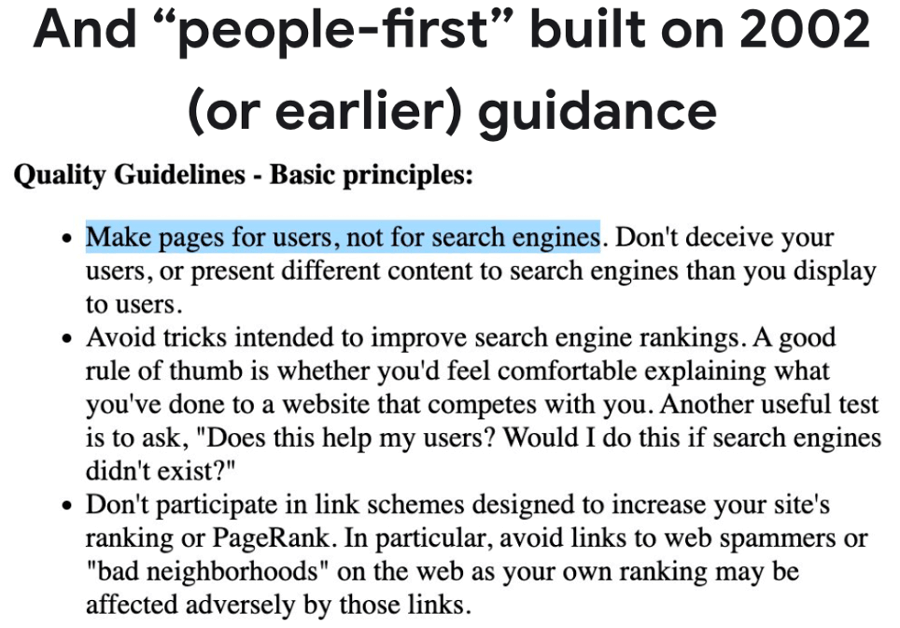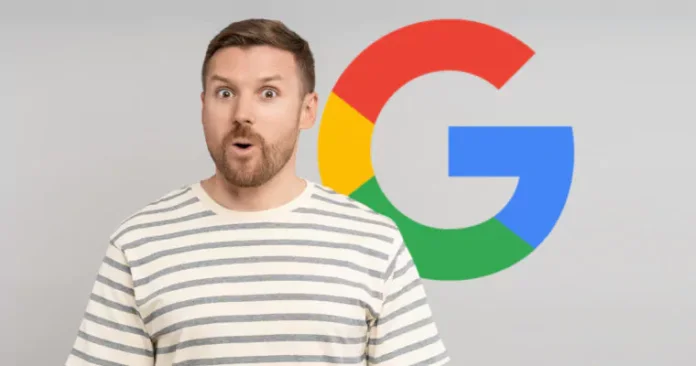Danny Sullivan’s outstanding talk from last week challenges the SEO community to reconsider the lessons they learn from Google’s documentation.
Danny Sullivan of Google shared information from a recent talk he gave, in which he discussed how the SEO community might have misunderstood how search rankings operate and laid the blame for the error on Google’s documentation and guidelines.
He used the publishing industry as an example, pointing out that almost all of them added author pages and bylines under the mistaken belief that Google looked for them, even though, as Google’s Danny Sullivan claims, Google does not.
Still, the presentation’s major takeaway wasn’t that Google doesn’t search for author pages.
The presentation’s subject was how Google’s guidelines might not adequately consider how people outside of Google might interpret them.
Danny penned:
“There needs to be more improvement in the disconnect between what Google tells creators and what creators hear about ranking well in Google Search. That’s mostly our fault.
We are going to be working on it. The key to success in content marketing is still putting people first, but hopefully we can communicate this more effectively.
He gave an example of how some SEOs interpret information from their documentation or search quality ratings too literally, despite the fact that Google intended the content to be understood broadly rather than precisely.
Danny gave the documentation on how to evaluate a webpage as an example, which was taken to mean that it revealed what is included in Google’s ranking algorithm.
Danny clarified:
“Our advice usually has a broad objective in mind.
For instance, we suggest that individuals consider the product content in a way that makes you want to trust it (rather than Google, you, or a reader). We provide examples of content that could engender trust, like an author’s biography.
Danny is implying that Google is not stating that its algorithm is searching for author pages when it instructs you to assess your content based on whether it fosters trust through elements like an author page. It’s just Google telling you to assess your website this way.
Danny discussed the difficulty in conveying what Google desires:
“People assume Google wants that specific thing, as if we’re going to check for it and rank content better for having it (we don’t),” because they hear us talk about author pages as something people might expect from people-first content.
How to Use Google’s Documentation for SEOs
Danny’s next slide is particularly noteworthy because it fundamentally alters our understanding of Google’s algorithms in light of what Google’s documentation says. From there, the next course of action is to reconsider the conventional wisdom regarding Google’s website ranking algorithm.
Danny showed a slide that included a quote from Google’s documentation along with the sections that some SEOs tend to overlook.
As stated in the documentation, the first slide displays:
What we say: a wide objective
‘Does the content present information in a way that makes you want to trust it, like with links to an author page or the site’s About page, or with clear sourcing, evidence of the expertise involved, or background about the author or the site that publishes it?’
The identical passage appears on the second slide, but here’s what SEOs learn from it:
background information about the writer with links to their page
Concerning the page?
Danny continues by explaining how Google’s recommendations are subsequently modified to include advice on topics the company never intended.
It needs to be underlined once more that Danny was not gesturing at SEOs. He was accepting responsibility for the documentation’s inability to convey the intended meaning in a clear and concise manner by considering its external perception.
He shared:
To make matters more complicated, some people read our advice and offer firm suggestions that we don’t really say, such as “If you have an About page, you rank better!”
You don’t.
That isn’t how it operates.
Danny Uplifts Increased Critical Analysis
Danny then urged SEOs to examine what some SEOs are saying more closely and to consider what people are telling them with greater skepticism.
He cautioned that there is a distinction between someone stating that this is what Google does and someone expressing their opinion about what they believe.
Danny suggested:
“Nothing in life, including Google ranking, is that easy.
When someone tells you, “This is what Google says to do,” do they clarify that this is their interpretation of what Google has said or what we have actually said?
What Does Google’s Guidance Actually Mean?
His explanation that much of the documentation for recent updates was essentially a rehash of the same guidance from decades ago and not really new or specific to these recent updates was a key takeaway from his presentation.
It’s also true that Google has been emphasizing helping others and putting their needs first for decades.
The only thing that has changed between then and now is that, at the time, everyone was aware that Google lacked the technological capacity to produce ranking signals that matched the content they were attempting to rank.
Google’s statement today is set against the backdrop of artificial intelligence, neural networks, and machine learning.
Thus, in contrast to 2002 or 2011, we now generally acknowledge the possibility that the information in the documentation is, in some way, also included in the algorithm.
Danny revealed an astonishing piece of information:
Some of the people I’ve spoken with in the last few weeks think our advice on using Google Search successfully is new, and they need to change their approach.
However, since it’s not new, that confuses us at Google.
The advice is predicated on recommendations that are decades or even longer old.
He then shared the ensuing slides to demonstrate how Google’s recommendations from back then and now are identical.
Advice Commencing in 2022

Advice From 2011

2002 Guidance Is The Same As Current People-First Guidance

This Modifies Our Perception of Google’s Advice
This ought to cause everyone to pause and reflect on how we should interpret Google’s advice.
Consequently, that might also alter our perception of Google’s algorithms.
The key takeaway from Danny Sullivan’s talk earlier this week was his advice to “buckle up,” which was misinterpreted to indicate that there would be disruptive updates.
That one sentence taken out of context is not nearly as important as what Danny actually said during his presentation. It’s evident now that Google may be thinking along similar lines, so the SEO community may want to take some time to reconsider Google’s documentation.


